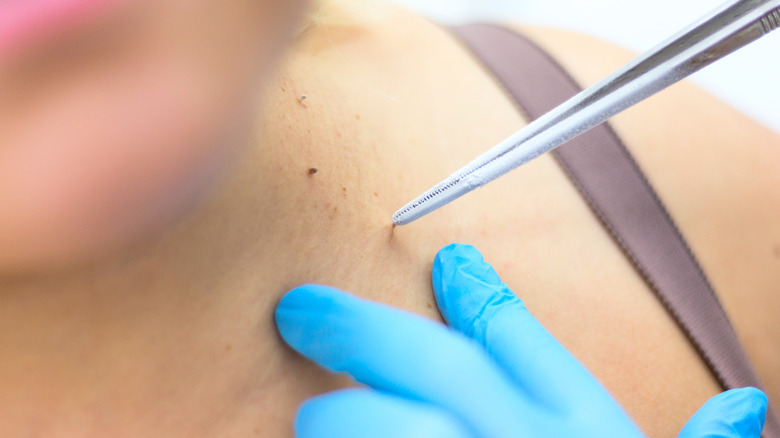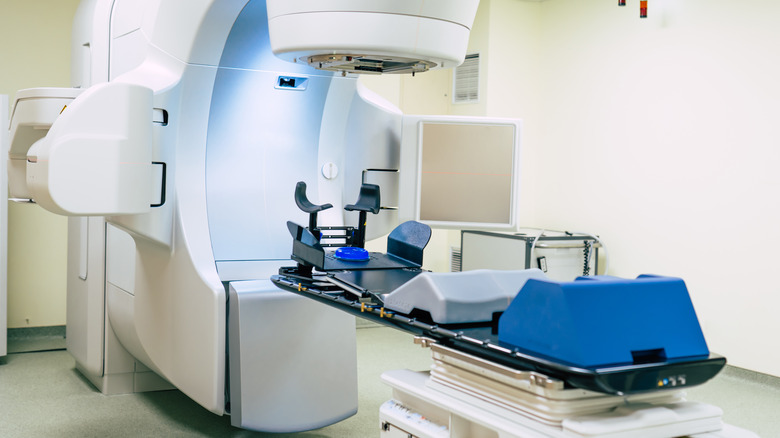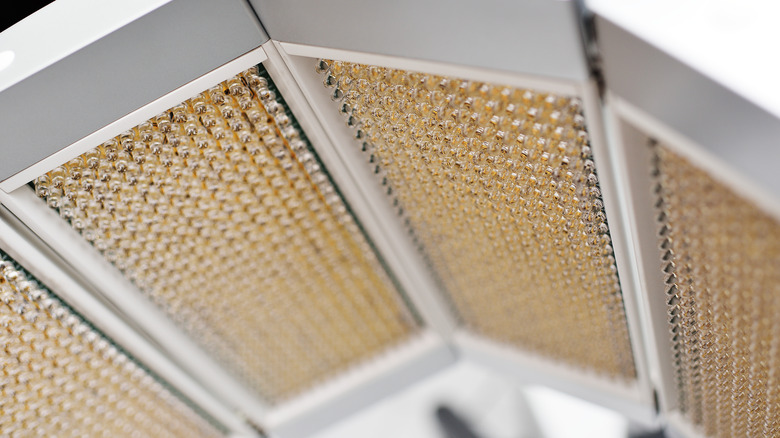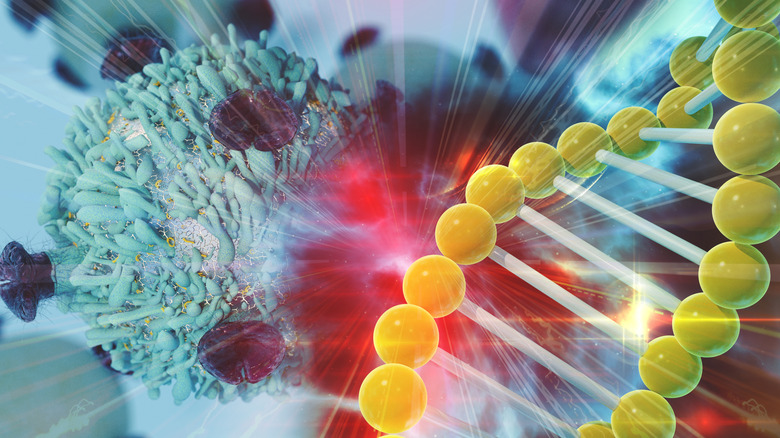What Are The Treatments For Skin Cancer?
Skin cancer is a dangerous illness that causes abnormal skin cell growth, and it can be fueled by exposure to ultraviolet (UV) radiation from the sun, explains the Mayo Clinic. It is among the most common types of cancer, affecting approximately every 1 in 5 people in the U.S. by age 70, according to the Skin Cancer Foundation. In addition, people who have had more than five sunburns have an even greater risk of melanoma. The American Academy of Dermatology Association (AAD) states that around 9,500 Americans are diagnosed with skin cancer daily.
According to the Mayo Clinic, there are many kinds of skin cancer. Basal and squamous cell carcinomas are most common, occurring in cells that may or may not be highly exposed to sun rays, such as the neck or face. They often have a waxy, flat, bleeding appearance or take the form of firm nodules. On the other hand, malignant melanoma is rare, but the worst and most rapidly-spreading type of skin cancer. It usually requires immediate medical attention or it could turn fatal (via WebMD). However, there are ways you can treat skin cancer, prevent it from worsening, and ease its symptoms.
Using surgery to treat skin cancer
According to the American Cancer Society, surgical methods are among the go-to treatments for melanoma — typically in the early stage — to get rid of cancerous tumors. There are various kinds of surgical options for skin cancer. One surgical technique is lymph node dissection, in which a surgeon removes lymph nodes adjacent to the cancer points. This helps limit the risk of cancer spreading further, explains the American Cancer Society.
Per Johns Hopkins Medicine, cryosurgery is a minimally invasive surgical technique used for freezing and destroying cancerous tissue. Doctors spray liquid nitrogen for cryosurgery directly on the affected part. It has a short recovery time and doesn't cause much pain. On the other hand, some doctors may suggest curettage or electrosurgery. Curettage involves cutting off the cancerous tissue, while electrosurgery destroys the remaining cancer growth and stops bleeding, explains Johns Hopkins Medicine.
Moh's surgery is a surgical technique optimal for when the cancer is on the outer layers and hasn't yet penetrated the deeper layers, per Mayo Clinic. A trained dermatologist or surgeon removes thin layers of the skin while observing cancerous growth under a microscope until all the affected region is removed.
How chemotherapy can help with skin cancer
According to the American Cancer Society, chemotherapy is a beneficial technique for killing cancerous growths. It involves the administration of drugs via an injection or a pill. The drug then travels throughout the body and attacks cancer cells. WebMD states that chemotherapy is typically suggested if the cancer reaches stage 3, and it's only recommended for stage 4 if other treatments don't offer results. The American Cancer Society reports that chemotherapy is usually done in many cycles to give your body sufficient time for recovery.
Per the Cancer Treatment Centers of America, some doctors might also recommend topical chemotherapy. You may be prescribed a chemotherapy cream containing fluorouracil that has to be applied to the tumor site. Topical chemotherapy is ideal for those with basal cell carcinoma or superficial cancer. The duration of this treatment is generally around anywhere from three to 12 weeks, and you may need to apply the chemotherapy cream twice every day.
Chemotherapy may be an effective treatment against cancer, but it does cause side effects, warns the National Cancer Institute. You may notice skin color changes due to pigmentation, rashes, or sunburns. Some people may have darker nails during the treatment. Chemotherapy may also lead to dehydrated skin and cause layers to peel and itch.
Benefits of using radiation therapy for skin cancer
According to Cancer Research UK, radiation therapy involves the use of high-energy radiation to kill cancerous cells, and it may be internal or external. External radiation therapy is performed by directing a beam to the cancerous tissue from outside the body. On the other hand, internal radiation therapy involves sending radiation to the cancerous growth from inside the body. Per the American Cancer Society, radiation therapy is a painless and precise process that is only directed at the affected site. It doesn't reach the neighboring tissues, thus limiting the risk of potential side effects. However, some people might feel skin irritation, pigmentation, and hair loss after radiation therapy sessions.
The Icon Cancer Centre reports that radiation therapy is good for patients who use blood thinners, as the treatment doesn't affect medication. It further states that each session duration depends on the size and location of the skin cancer, but usually, it's around 20 minutes. Depending on how complex the tumors are, the length of radiation therapy could be between four to 30 sessions, explains the Icon Cancer Centre.
Treating skin cancer with photodynamic therapy
Per the Cleveland Clinic, photodynamic therapy is a procedure that involves the use of specific drugs called photosensitizers to kill cancerous cells. These special drugs are activated under light that triggers a killer chemical reaction to destroy cancer cells. The Cleveland Clinic further explains that the photosensitizer agent is administered through an injection into the vein, given to the patient as a pill, or applied directly to the tumor site. Then, a special light is shone on the body. The light could be special lasers or natural sunlight.
According to Cancer Research UK, after going for photodynamic therapy, you may experience pain for a few days. It's also possible for the skin to become itchy or swollen. Some cancerous sites may bleed or ooze fluids for a while as well. Still, the Cleveland Clinic explains that photodynamic therapy is among the safest skin cancer treatment option with no known long-term side effects, and it shows minimal scarring post-treatment.
Using immunotherapy for skin cancer treatment
Another treatment used for skin cancer is called immunotherapy. According to the National Health Service (NHS), immunotherapy is a remarkable cancer treatment technique that is used for stage 4 melanoma. In recent years, immunotherapy has shown incredible results against skin cancer treatments. Per the NHS, immunotherapy may involve the use of one or more drugs to kill cancer cells. A 2019 study published in International Immunology showed that the three-year survival rate has increased from 12% to a whopping 58% since the advent of new immunotherapy drugs. These drugs, called checkpoint inhibitors, release T cells that are responsible for killing cancer, per the Memorial Sloan Kettering Cancer Center. The most commonly used checkpoint inhibitors are ipilimumab, nivolumab, and pembrolizumab. They are either injected or administered via drip to the patient, usually over the course of weeks. The NHS warns that those undergoing immunotherapy may experience diarrhea, loss of appetite, fatigue, or rashes.






